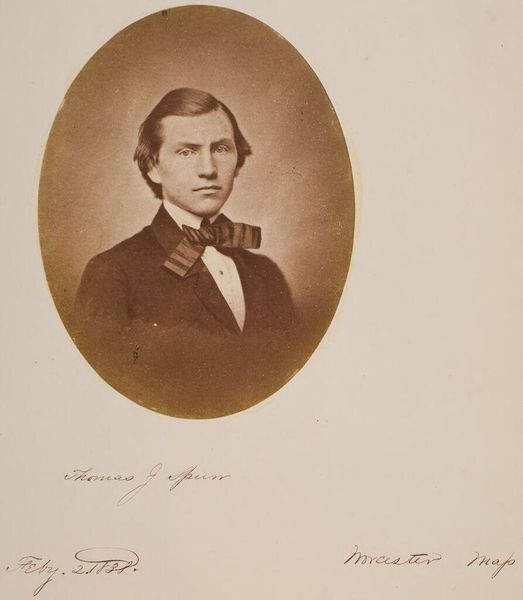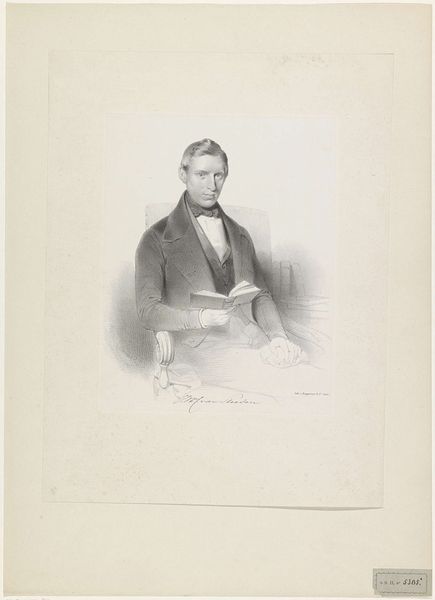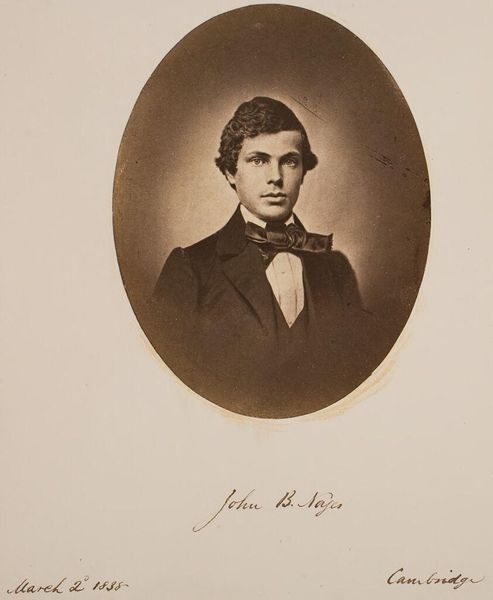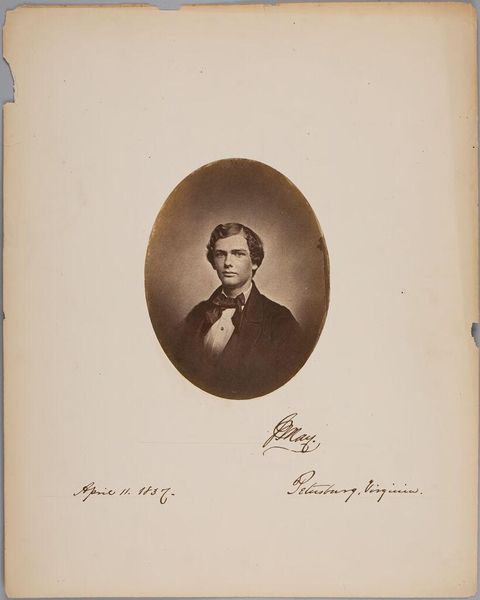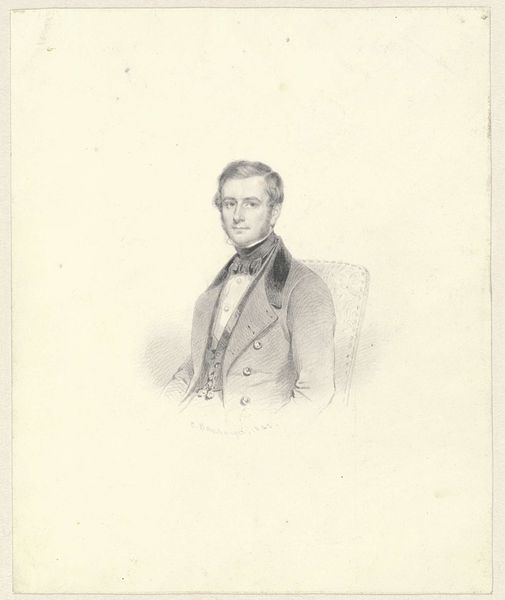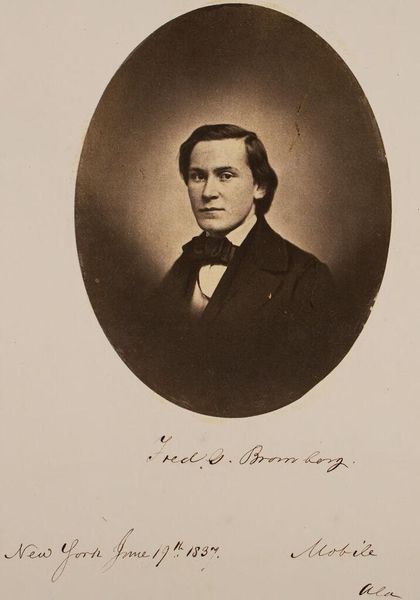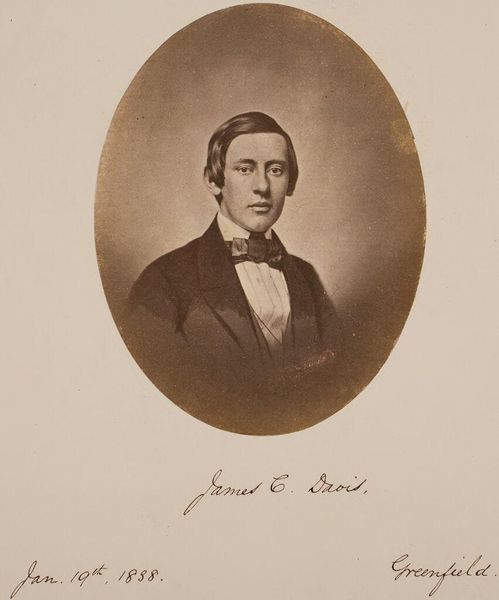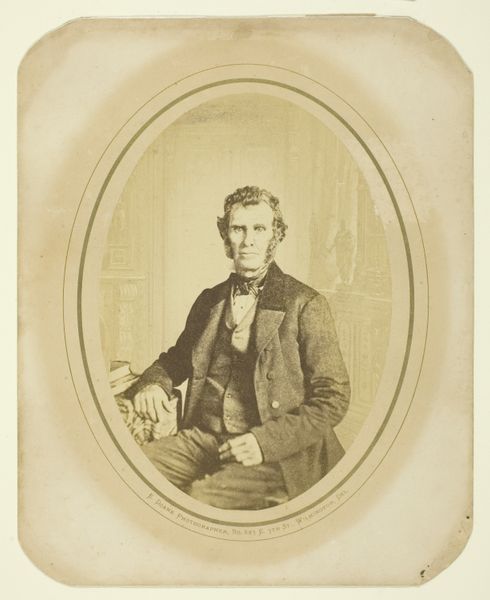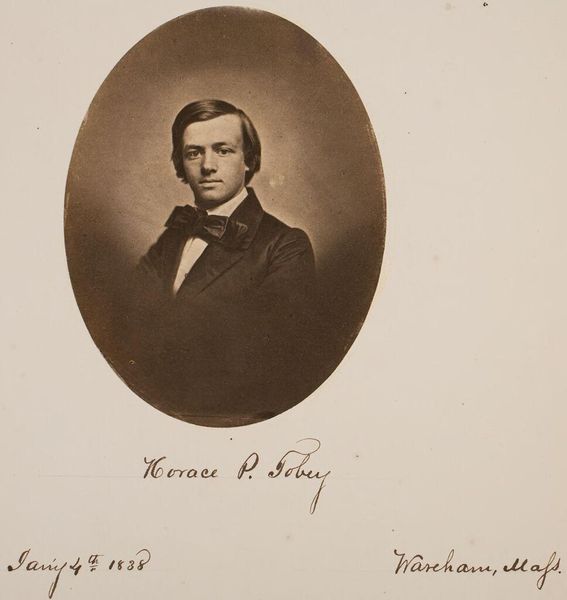
Dimensions: image: 14.3 x 10.9 cm (5 5/8 x 4 5/16 in.) mount: 35.7 x 27.8 cm (14 1/16 x 10 15/16 in.)
Copyright: CC0 1.0
Editor: This is John Adams Whipple's portrait of Amory Pollard Sawyer, dating from the mid-19th century. It feels formal, almost staged. What underlying messages do you think Whipple tries to convey through this daguerreotype? Curator: Notice the oval frame, a symbol of classical portraiture, and the almost melancholic expression. It's a pose struck to convey dignity, but also hints at the ephemeral nature of life itself. The daguerreotype, as an early form of photography, was often employed as a memento mori. Editor: Memento mori? So, it's about remembering mortality? Curator: Precisely. It was a way to capture a likeness before it faded, both literally in life and figuratively into memory. Think of the bow tie, almost like a fleeting butterfly—a traditional symbol for the soul. Editor: That makes me see it in a different light! It's not just a portrait, but a quiet reflection on life and death. Curator: Indeed. These visual symbols invite us to contemplate the cultural memory embedded within such images.
Comments
No comments
Be the first to comment and join the conversation on the ultimate creative platform.
